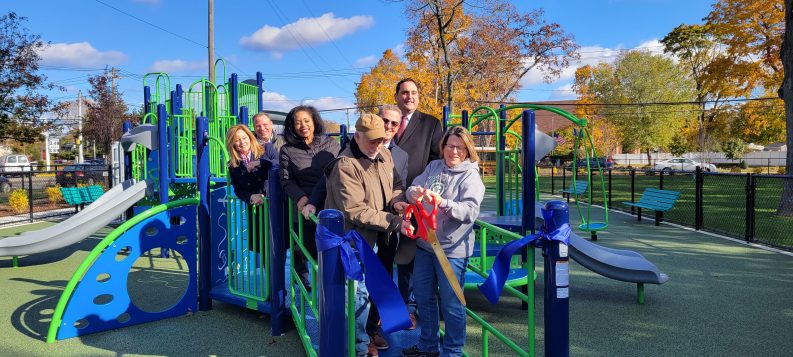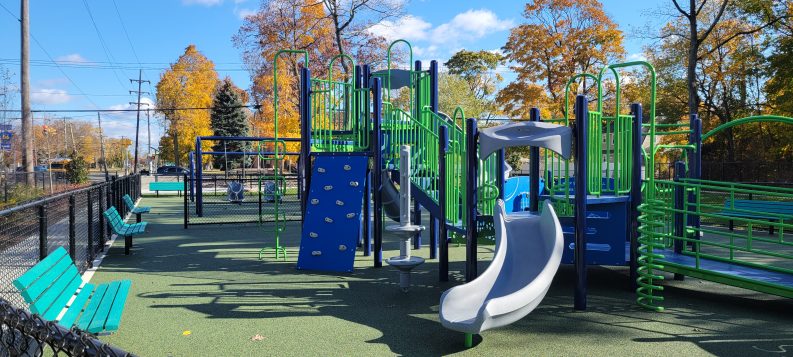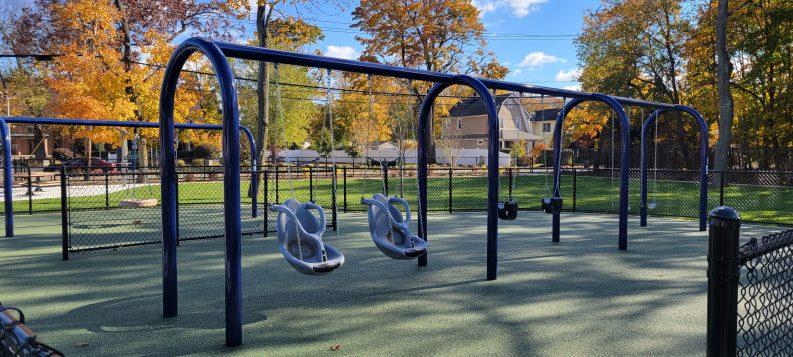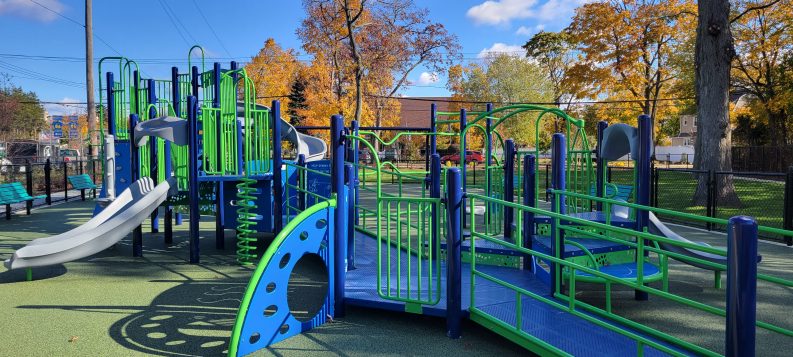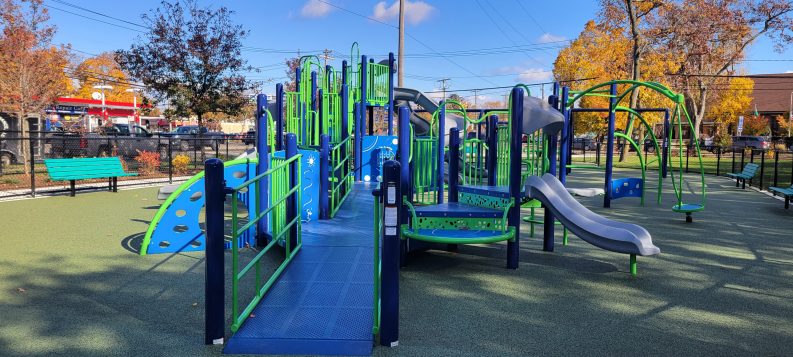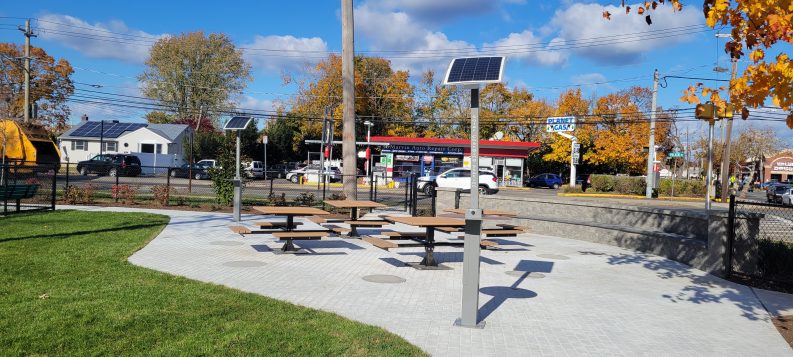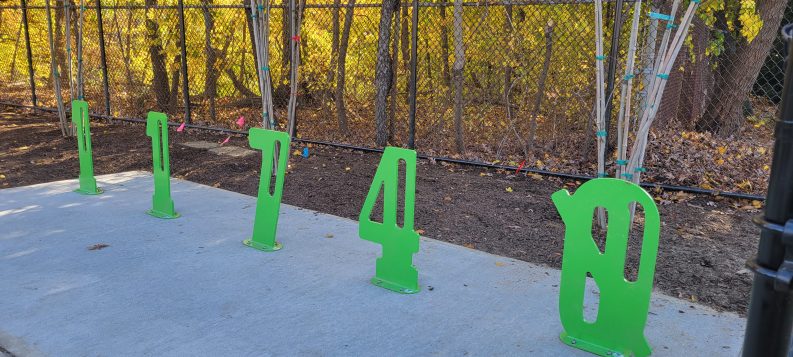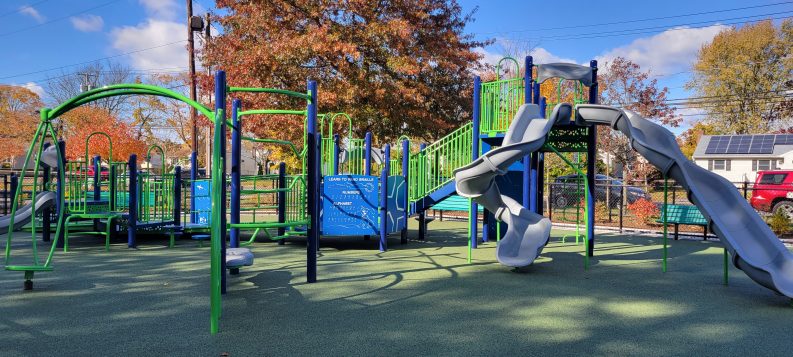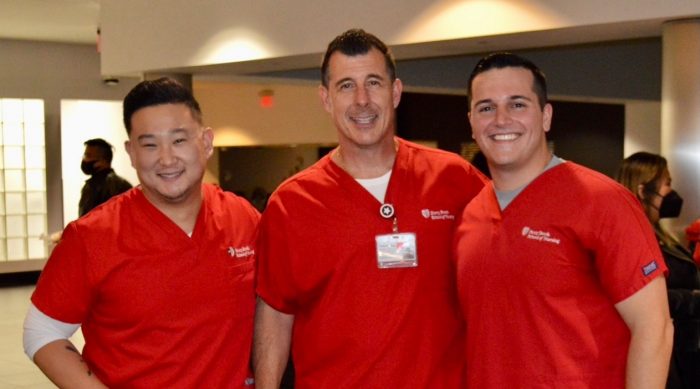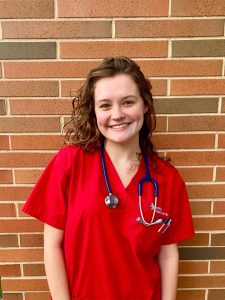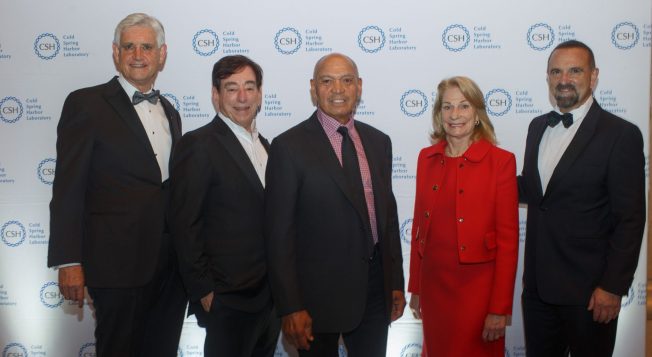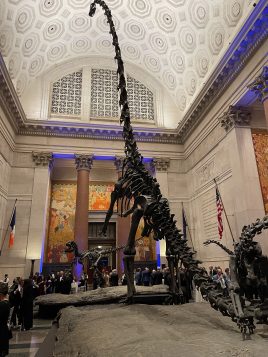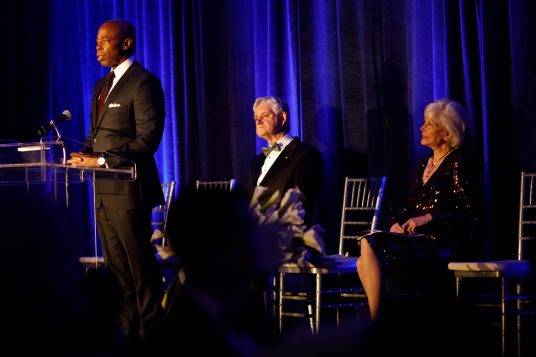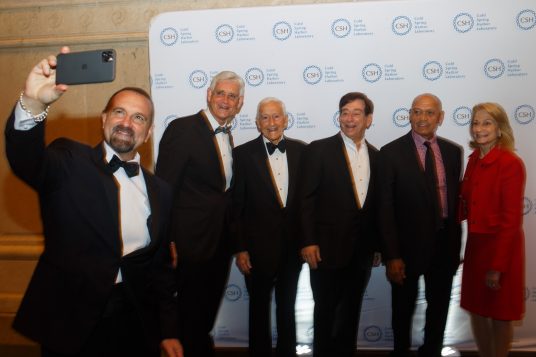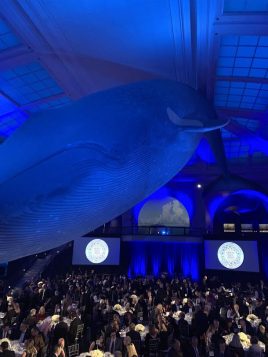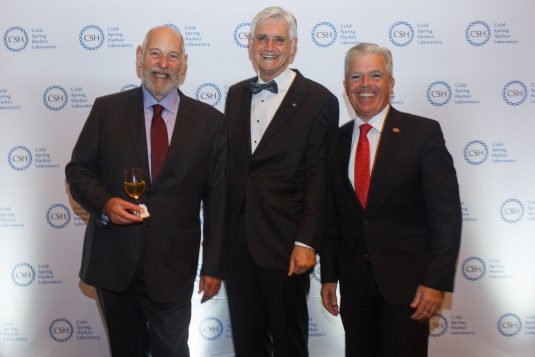Town of Huntington Supervisor Chad A. Lupinacci, Councilman Mark Cuthbertson, Councilwoman Joan Cergol, Town Clerk Andrew Raia and Receiver of Taxes Jillian Guthman were joined by Town officials, the Town’s EOSPA Committee and the Greenlawn Civic Association for a ribbon-cutting to open the new playground at the Town’s regional Greenlawn Park on Nov. 16.
“We are excited to see these playground improvements realized at Greenlawn Park, one of our most popular regional parks, which will provide a complement to the popular Greenlawn skate park and athletic fields,” said Supervisor Chad A. Lupinacci, whose administration worked closely with the Greenlawn Civic Association to develop plans for the new playground. “Greenlawn Park Playground is a case study in a community advocating for the improvement of their open space and a local government responding to that community.”
Councilman Mark Cuthbertson said, “I want to thank the Greenlawn Civic Association and the community for their hard work and activism on behalf of renovating this park . Although it took longer than expected due to Covid it is finished and it’s a beautiful place for our residents to enjoy.”
Councilwoman Joan Cergol stated, “I absolutely love the improvements made to Greenlawn Park’s playground and am grateful to the Greenlawn Civic Association and our Town departments that worked so diligently to ensure our children have a safe and vibrant place to play while enjoying nature.”
Deputy Supervisor Ed Smyth and Councilman Eugene Cook were unable to attend the ceremony but voted to approve the EOSPA funding for the playground along with Supervisor Lupinacci, Councilman Cuthbertson and Councilwoman Cergol.
Deputy Supervisor Ed Smyth stated, “The Greenlawn Park Playground reconstruction was truly a collaborative effort. Thank you to the Greenlawn Civic Association for working with Town staff in the Departments of Engineering, Parks and Recreation, and Planning and Environment as well as the Town’s EOSPA Committee to develop a playground plan that reflects the community’s needs.”
“I would recommend to every parent and grandparent to find some time with their children or grandchildren to explore the new playground at Greenlawn Park, it’s beautiful,” stated Councilman Eugene Cook. “Greenlawn Park has something for everyone in the family, including new playground equipment, a new concrete walkway, a new picnic area with a gazebo, landscaping and even solar cell phone/tablet charging stations. A wonderful park for a family to share an afternoon.”
Town Clerk Andrew Raia stated, “It was a pleasure to take part in the ribbon-cutting ceremony for the Greenlawn Park Playground. This is a state-of-the-art playground that will provide local children with a safe, nourishing environment and place to grow.”
Receiver of Taxes Jillian Guthman said, “The Greenlawn Park Playground is a stunning example of the great work that can be achieved when local government partners with the community. That the playground is handicap accessible is reflective of the vision that should be included in all construction initiatives. I love the solar powered charging stations too. Many thanks to the Greenlawn Civic Association for their important role in the design of this local treasure!”
“The Greenlawn Civic Association would like to express our sincere appreciation to the Town of Huntington with the completion of the new playground at Greenlawn Park. It is a beautifully renovated open space for the community to enjoy! It was truly a cooperative effort between the Greenlawn Civic Association and the Town of Huntington,” said Jane Irving, President, Greenlawn Civic Association.
Greenlawn Civic Association was represented at the event by President Jane Irving, Kevin Smith, Secretary Ellen Niemczyk, and Richard Holmes.
Also in attendance from the Town were David Kaufman, Elana Israel-Edgar, and Garrett Chelius from the Department of Planning & Environment, Director Bill Musto and Deputy Director Walter Edwards from the Department of Parks & Recreation, and members of the Town EOSPA Committee (Environmental Open Space & Park Fund Advisory Committee): Chairman Mark McAteer, Ken Christensen, and Steven Spucces.
Representatives of the Greenlawn Civic Association requested the playground improvements, working with Director Jim Ahrens and Town Engineer Nick Jimenez in the Department of Engineering, staff in attendance as well as Margo Myles from the Department of Planning & Environment, and the Town’s EOSPA Committee to develop a playground plan that reflected the community’s needs. The Town Board designated up to $525,000 in EOSPA-recommended Environmental Open Space and Park Improvement Funding for the project in January 2020. The project was bid in January 2021, the Town received 12 bids, and the Town Board awarded the construction contract to the lowest responsible bidder, Greenlawn-based Turf Tek USA in February 2021. Construction started in June 2021. Total construction costs came to approximately $450,000.
Greenlawn Park (Tri-Village) Playground, at the corner of Pulaski Road and Broadway-Greenlawn Road in Greenlawn, has undergone substantial improvements, including:
- new playground equipment;
- a new concrete walkway;
- a new picnic area with a gazebo;
- new landscape plantings;
- new fences – perimeter and interior; and
- solar cell phone/tablet charging stations.
[VIDEO]: https://huntingtonny.granicus.
com/player/clip/2708?& redirect=true

